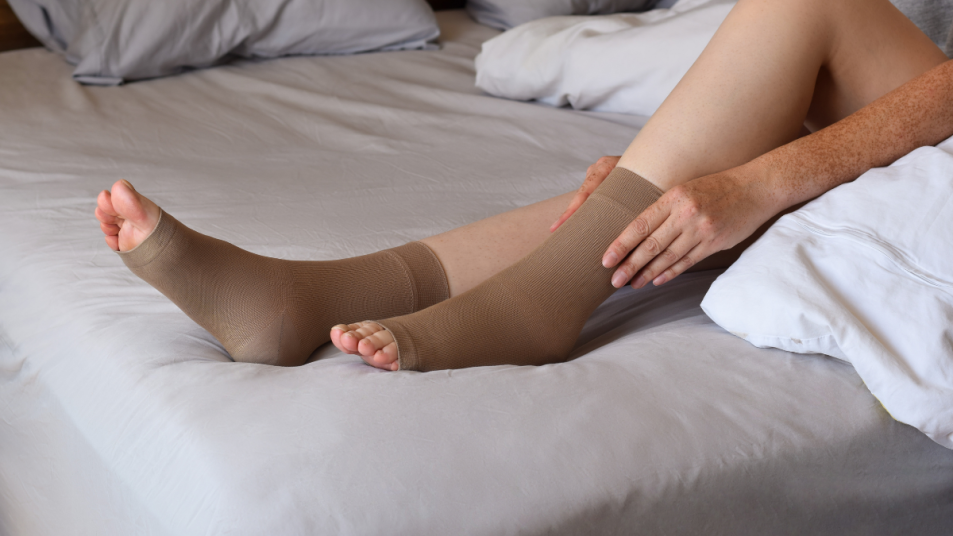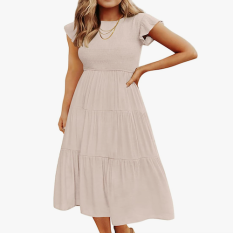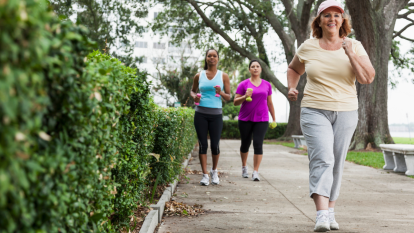TikTok Is Obsessed With Compression Socks – Are They Right For You?
These trendy socks might be your secret weapon for preventing blood clots and improving circulation!

For years, doctors have been warning us of the dangers of a sedentary lifestyle. Sitting and standing for extended periods of time can lead to circulation issues down the road, especially as we get older. But there’s a secret weapon for maintaining healthy blood flow, and it’s not even that expensive: compression socks. The benefits of wearing compression socks include more than just helping you recover from a procedure. In fact, this simple solution might be exactly what you need to maintain healthy blood flow and prevent soreness and stiffness, even if your lifestyle means that you’re standing all day long.
How do compression socks work?
Compression socks are exactly what they sound like: Socks of varying height and tightness that compress your legs slightly more than a normal pair. “I like to think of the compression socks as a sausage casing that helps your calf muscles squeeze the blood back towards your heart,” explains Brianne Gober, MD, a certified wound-specialist physician. “It’s like the way you squeeze toothpaste out of the tube!”
There are a few different types of compression socks. Medical-grade compression socks, including graduated stockings and antiembolism stockings, are manufactured to strict technical specifications. They tend to sit at the tighter end of the compression spectrum, and typically require a prescription to purchase. For instance, your doctor may prescribe medical-grade compression socks if you’re bedridden after a surgery, pregnant, or at increased risk of blood clots or deep-vein thrombosis.
On the other hand, nonmedical compression socks can be bought over the counter, and range from mid-calf to mid-thigh height. This type of compression sock is most useful for everyday purposes, such as relieving stiffness or soreness.
The benefits of compression socks
The primary benefit of wearing compression socks is improved circulation, says Britanny Ferri, PhD and licensed occupational therapist. “Compression socks are designed to promote blood circulation by applying gentle pressure to your legs and ankles. By improving circulation, compression socks reduce swelling, and can even alleviate pain and fatigue in the legs,” Ferri explains.
When we sit or stand for extended periods of time, blood begins to pool in our feet and lower legs. This can lead to swelling, discomfort and even blood clots, especially in combination with natural changes in blood flow that occur with age. Compression socks can ease this swelling and improve lymphatic drainage and discomfort.
“Wearing compression socks may aid in reducing the risk of developing blood clots, especially during long periods of inactivity, such as when traveling,” says Dev Batra, MD. That makes compression socks great for long-haul flights and road trips.
And according to Ferri, they can even be useful for reducing soreness after workouts. “Many people find that wearing compression socks also helps speed up recovery after exercise by reducing muscle soreness,” Ferri says.
Who should wear compression socks?
Compression socks have historically been used to treat venous disease, such as varicose veins and spider veins. But more and more women are turning to them earlier in life. In fact, compression socks are a popular topic on TikTok:
Related: Doctors Reveal When You Should Worry About Varicose Veins — Plus How To Shrink Them
That’s because wearing compression socks regularly can be key to prevent disease down the road. “We all think about preventing varicose veins and spider veins, but it’s important to know that venous disease later in life can cause major disability,” says Dr. Gober. “Severe chronic leg edema and difficult-to-heal chronic skin wounds and infections can contribute to a decreased quality in life down the line, so if you stand all day while working, I would consider finding some compression socks to wear.”
How to find the best compression socks for women
When shopping for compression socks, the first thing you’ll want to pay attention to is the compression rating, which identifies the amount of pressure they apply. This ranges from light compression (about 5-15 mmHg) to higher compression levels (more than 30 mmHg).
“For everyday wear, a milder compression level between 15-20 mmHg is usually good enough and can be worn comfortably,” Ferri advises. “However, for those with particular health conditions and who wear compression socks based on a doctor’s recommendation, higher grades might be a good choice.” Health conditions such as chronic venous and edema, then, might warrant a more compressive pair of socks – otherwise, a milder compression is best.
Other than the compression rating, you’ll also want to pay attention to the height of the socks. “The height of the compression socks plays a significant role in their benefits. The socks should cover the entire calf muscle and extend up to just below the knee for optimal results,” explains Dr. Batra. “This ensures evenly distributed compression, promoting proper circulation throughout the lower leg.”
For an affordable, basic option, consider these plain white socks from Wanderlust. For a more stylish option, check out sock brand Vim & Vigr, which features a variety of different patterns and colors. And if you’re an athlete or looking for a more recovery-focused option, check out these performance socks from Bombas, which also come in a few different color combinations.
How long should you wear compression socks?

According to Ferri, that depends on why you’re wearing them. “Some might wear them just during a workday or throughout a flight, while others might wear them for the entire day, if told to do so by their doctor,” Ferri she says. If you’ve been prescribed compression socks, be sure to follow your doctor’s instructions. Otherwise, wearing them from 9-5, or during periods of prolonged sitting or standing, is best. It’s not necessary (or recommended) to wear them overnight.
And of course, if you aren’t sure how long to keep your compression socks on, or what compression level is best for you, consider asking your doctor. “It’s a good idea to talk with a healthcare provider to find the compression level that’s right for you and make sure that they are used safely,” Ferri says.
Keep reading for more simple ways to improve blood flow:
Is Poor Circulation Halting Your Ability To Lose Weight? Here’s How To Overcome It
3 Easy Ways to Boost Circulation and Feel Younger All Over
This content is not a substitute for professional medical advice or diagnosis. Always consult your physician before pursuing any treatment plan.













